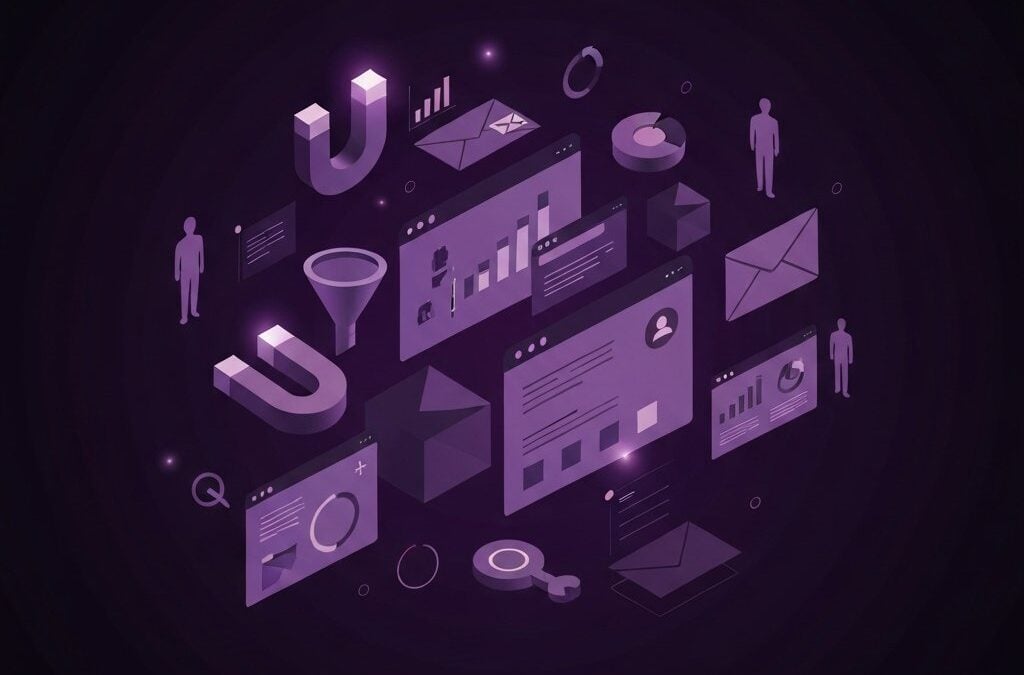Artificial intelligence (AI) has changed how we target customers. Businesses now have new ways to reach their ideal audience. AI transforms data into clear insights and helps companies be more efficient. This article discusses how AI can boost customer targeting. We explain key strategies, share real case studies, and offer practical tips.
Introduction: The New Era of Customer Targeting
The marketing world has evolved. Today, companies use AI to reach the right customers. AI analyzes data at scale and finds patterns that humans often miss. This new era makes customer targeting more accurate. In a fast-paced market, precision is vital. Companies that use AI hold a clear advantage. They can create a closer bond with customers by offering experiences that matter. As you read this article, you will see that harnessing AI is both smart and necessary.
Understanding AI and Its Influence
What Is Artificial Intelligence?
Artificial Intelligence is a branch of computer science. It empowers machines to mimic human tasks. AI learns from data. It improves over time. In customer targeting, AI processes large amounts of information. It identifies trends and helps refine strategies. Many businesses use AI to create refined audience profiles. For instance, AI can predict which customers may be interested in a specific product. This tool can shape marketing decisions with accurate insights.
AI Tools in Modern Marketing
Modern marketers have tools that simplify data collection and analysis. Companies use machine learning algorithms and natural language processing. Several companies use AI for customer segmentation, campaign optimization, and personalized communication. Tools such as IBM Watson and Google Cloud AI play key roles in identifying customer behavior patterns. Resources like Forbes and Harvard Business Review offer insight into AI innovations. These articles explain how businesses benefit from technology.
AI also improves customer service by providing chatbots and automated responses. Chatbots engage customers directly and answer quick queries. Marketers can rely on AI for a fast response to customer demands. In this way, AI creates a bridge between businesses and their customers. From basic interactions to in-depth analysis, AI empowers modern marketing teams.
Strategies to Harness AI for Customer Targeting
Companies need clear strategies when they use AI. Several steps can help harness AI for better customer targeting. Let’s explore useful techniques.
Data Collection and Analysis
Data remains the backbone of any AI initiative. Marketers collect data from social media, online transactions, and website visits. Data drives every decision. AI algorithms process this data quickly and accurately. Companies use data analytics to identify trends and patterns. For instance, an online retailer may use AI to analyze purchase histories and browsing behavior. The analysis creates detailed customer segments.
The key steps include:
- Gathering high-quality data from various sources.
- Cleaning the data to remove any duplicates or errors.
- Segmenting data into distinct groups.
These actions help marketers design better campaigns. Trusted analytical platforms, like those from IBM and Google, provide value in this step. This approach leads to more effective targeting.
Tailored Customer Experiences
AI helps design experiences that feel personal. Personalized communication drives engagement. By understanding customers better, businesses can craft messages that match individual preferences. For instance, AI can help send the right message at the right time.
Personalization is key. Every message feels custom. Companies use machine learning to improve recommendations on websites, suggest similar products, and curate content collections. The result is a more positive customer experience. Not only does this build trust, but it also boosts customer loyalty.
Marketers can test the output of AI tools. They can then optimize strategies based on feedback. Effective campaigns rely on customization and constant adjustments. You can read more on how personalization works by visiting our blog.
Predictive Analytics in Action
Predictive analytics uses data to forecast a customer’s next move. Marketers rely on AI to predict trends and behaviors. For instance, an e-commerce platform might use AI to suggest new product lines. It forecasts what customers may need next.
Predictive tools use historical data and current trends. They adjust recommendations based on real-time analysis. It is like reading a customer’s mind. When AI predicts market trends, companies can pre-emptively address customer demands. Resources such as Harvard Business Review discuss these dynamic methods.
This technique not only saves time but also increases revenue. By anticipating customer needs, companies craft better offers and create timely promotions. Predictive analytics is a cornerstone strategy in modern customer targeting.
Case Studies and Success Stories
Many companies have reaped the rewards of AI-driven customer targeting. Real-life examples tell a compelling tale. Below, we share two case studies that demonstrate AI’s power.
Example 1: E-commerce Optimizations
A leading online retailer used AI to streamline its services. The company noticed that customers abandoned shopping carts frequently. AI analyzed the behavior and identified critical factors. It was discovered that slow website speeds and complex checkouts caused frustration. The retailer then adopted a site redesign and simplified the checkout process.
Within weeks, customer conversions increased notably. The AI system also sent personalized product recommendations to customers who had abandoned their carts. This technique reminded customers to complete purchases. The strategy worked like magic. Analysts from Forbes praised this method, stating that AI-driven insights significantly boost conversion rates.
Example 2: Improved Campaign Reach
A global media company used AI for targeted ad campaigns. The company faced challenges with generic messaging. AI powered by machine learning analyzed user interests. It identified niche segments that standard analysis had missed. This allowed the company to craft ads that resonated. When the new ads launched, customer engagement soared.
This case study reveals the benefits of precise targeting. The company saw increased sales and enhanced brand loyalty. AI helped reduce unnecessary ad spend. It focused only on the segments with the highest potential. This success prompted the industry to look more closely at AI. Websites like IBM and Google Cloud have detailed case studies on such innovations.
Challenges and Ethical Considerations
Despite many benefits, challenges remain. Businesses must address issues like data privacy and algorithm fairness. These challenges affect public trust and brand reputation.
Data Privacy and Security
Data is powerful. However, it can also be risky. Companies must protect customer information. With AI, marketers can accidentally misuse personal data. Strict data security protocols help mitigate these risks. Regulators around the world now enforce data protection laws. General Data Protection Regulation (GDPR) is a prime example. Organisations must be transparent about data use.
Proper encryption and constant monitoring build customer trust. AI-driven advertising must abide by ethical guidelines. Security works hand in hand with innovation. This ensures that customers feel safe while enjoying personalized experiences. For more information, several governmental websites and blogs offer guidelines on data security.
Bias and Algorithm Fairness
Another challenge involves bias within AI systems. Bias can creep into data. It affects the fairness of AI recommendations. This creates unequal customer experiences. Responsible companies test for bias and adjust algorithms. They also invest in an impartial dataset that reflects diverse customer groups.
A fair AI system improves decision-making. It increases the quality of predictions and builds a strong customer base. Many universities and research institutions examine algorithmic bias. Studies by Harvard and MIT provide practical guidance. Business leaders must balance profit goals with ethical responsibilities. In this way, they protect their customers and their reputation.
Future Trends in AI-Driven Customer Targeting
The field of AI evolves at a rapid pace. We see trends that will shape consumer targeting in the next decade. Marketers must stay vigilant. The near future holds great promise for industries that harness these innovations.
Emerging Technologies
Several emerging technologies work in tandem with AI. One such technology is deep learning. It allows systems to process unstructured data. Additionally, natural language processing (NLP) refines customer conversations. Augmented data analytics will soon combine AI with customer sentiment analysis. This trend will stretch the limits of current strategies.
Businesses that adopt innovative AI practices will maintain a competitive edge. For example, platforms like Adobe and Salesforce are leaning into AI-based solutions. Their tools help refine marketing strategies in real time. These systems predict customer behavior faster and more accurately than ever.
Integration of Augmented Reality and AI
Another exciting trend is augmented reality (AR). AR integrates with AI to offer immersive target experiences. Customers can visualize products in their own space. This technology creates a blend of online and offline experiences. Such integration increases engagement and builds lasting customer relationships.
When AR meets AI, brands can create a virtual shopping journey. It enhances customer interaction and satisfaction. Companies already exploring AR and AI pairing witness strong results. Innovative brands lead the way, providing a glimpse into the future of customer engagement. Link exchanges on sites like TechCrunch and Wired discuss these trends in depth.
Conclusion: The Road Ahead
Harnessing AI for better customer targeting is a winning strategy. AI drives insights that enable businesses to understand their audience more deeply. It simplifies data analysis and enhances personalized messaging. Our discussion shows that AI can revolutionize marketing.
Companies must plan carefully. They should adopt robust data practices and foster ethical AI systems. By doing so, they safeguard customer trust and secure long-term growth. The future holds exciting prospects. Artificial intelligence continues to shape the landscape of customer targeting as never before.
Businesses that embrace AI today will grow tomorrow. They will lead with innovation and create strong customer bonds. By using real-world examples, advanced tools, and ethical practices, organizations can master the art of customer targeting. This transformation not only drives revenue but also enhances brand loyalty and market presence.
As you reflect on these insights, consider the steps you can take. Explore AI tools, secure your data, and adopt ethical practices. Do not shy away from innovation. Instead, embrace it as a key driver for your marketing strategy.
For more discussions on digital marketing and emerging technologies, check out helpful guides on authoritative sites like IBM and Harvard Business Review. These resources deepen your understanding of AI-driven strategies and inspire new ideas.
The journey ahead is both challenging and exciting. As AI evolves, so must your approach to customer targeting. Equip yourself with the best tools and stay updated with trends. Let AI drive your business decisions with precision and creativity.
Finally, remember the power of personalization. A tailored experience is worth its weight in gold. By investing in AI, you invest in a brighter future for your customer relationships.
Harness AI now, refine your strategies, and watch your customer engagement soar. The road ahead is promising and shaped by intelligent technology.



